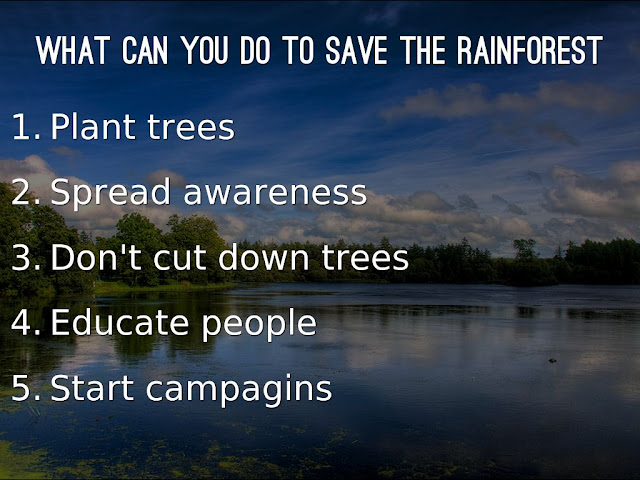Skip to main content
How can we avoid rainforests
Rainforests are being cut mostly for economic reasons, though there are political and social motivations as well. A significant portion of deforestation is caused by poor farmers simply trying to eke out a living on marginal lands. Beyond conversion for subsistence agriculture, activities like logging, clearing for cattle pasture and commercial agriculture are sizable contributors to deforestation on a global scale. Agricultural fires typically used for land-clearing often spread outside cultivated areas and into degraded rainforest regions.
Tropical rainforests are being deforested at an alarming rate. Each year hundreds of thousands of hectares of tropical rainforests are being opened for logging and then for clearance for plantations for planting sugar cane, for bio-fuels, for growing oil palm plantations and for raising cattle. All of these practices provide short term gains and in their wake some 2 or 3 years later leave a dust bowl where a rainforest once stood. Tropical rainforests are complex ecosystems and nutrients from fallen leaves and debris are quickly recycled in the hot, humid environment and reabsorbed by the trees and vegetation. This rapid recycling of nutrients into the trees means that the soil is nutrient poor, and after the trees are removed the soil quickly becomes depleted of nutrients and is unable to support plantations or cattle and the land is soon barren and abandoned. The barren land is exposed to the elements and wind and rain soon wash away the top soil until a dust bowl remains. The top soil is washed away to lower ground and silts up rivers leading to localized flooding of villages and towns.
Without tropical rainforest trees and vegetation to take up water the water cycle changes and there is further and more extensive flooding. Carbon dioxide is no longer fixed into vegetation and carbon dioxide levels rise leading to enhanced global warming and climate change on a global scale. It is estimated that deforestation accounts for 25% of the annual emissions of carbon dioxide and other heat trapping gases. Saving tropical rainforests is at the heart of preventing climate change. The deforestation of tropical rainforests is leading to a phenomenal loss of global biodiversity and the consequent loss of medicines, foods and other resources. Deforestation is also leading to localized changing weather patterns, flooding and an increase in carbon emissions and climate change. The loss of the rainforests is affecting the entire planet and needs to be halted right now. So, what can you do to prevent deforestation?
10 tips to prevent deforestation!
1) Look at the ingredients of cereals, cereal bars and other products you buy and don’t buy products with palm oil in unless it is sustainably produced.
2) Do not buy timber products from tropical hardwoods buy timber products that have been grown sustainably in carefully managed forests.
3) Buy tea and coffee that is grown sustainably and do not buy these products if grown on cleared rainforest. Think before you drink.
4) Do not buy soya grown on cleared rainforests.
5) Do not buy meat grown on cleared rainforests.
6) Do not buy products from large commercial companies which are involved in clearing rainforests for cattle ranching.
7) Join Our Future Planet and contribute to discussions on how to save the rainforests.
8) Join an organization that plays an active role in rainforest conservation such as Friends of the Earth, Greenpeace and Worldwide Fund for Nature.
9) Write to your Prime Minister or president urging him or her to fund rainforest conservation and not to use taxes to fund destructive projects.
10) Organise support for rainforests through youth groups, political parties and conservation organisations.
What are your views? Add your comment below. We welcome your thoughts and proposals. Not a Planetary Citizen






Comments